As the world becomes more interested in the therapeutic and recreational benefits of cannabis, there’s a growing buzz around the compounds responsible for these effects: cannabinoids.
But what are cannabinoids, and how do they work? Many people ask these questions as they navigate the world of cannabis products.
In this article, we’ll take a deep dive into the science of cannabinoids, exploring their origins, functions, and potential applications. Whether you’re a seasoned cannabis consumer or just curious about this fascinating plant, this article is for you.
The article is divided into sections with sub-topics:
What are cannabinoids, and where are they found?
Cannabinoids are a diverse group of compounds that occur naturally in the Cannabis Sativa plant. They produce their effects by interacting with our bodies’ endocannabinoid system (ECS), crucial in regulating various physiological processes such as mood, appetite, and pain. The most well-known are THC and CBD, with THC being the primary psychoactive molecule that gets us high.
We also discovered certain types of cannabinoids in some Rhododendron species and legumes, the liverwort genus Radula, and some fungi.
Origins and history in human culture
Our relationship with cannabis began 12,000 years ago in the regions now Mongolia and southern Siberia. Our ancestors were wandering tribes in a constant battle for survival. However, they discovered an invaluable ally to help them fight the harsh existence. One that can provide them with fibre for nets, ropes, clothes, and seeds for food and oil.
Because of this, our fates would intertwine, and cannabis would accompany humanity throughout our various migrations, spreading its seeds worldwide.
It didn’t take long for our ancestors to discover its euphoric effects, probably by accident. We guess that someone burned discarded plant matter to keep the fire going and soon after noticed strange new feelings within.

You don’t have to be very smart to recognise the distinct resin and the potent smell of the cannabis plant, so it would have been easy for the ancients to figure out that only females produce the psychoactive ingredients that would get them high. This, most likely, would have pushed them to start cultivation.
Ritualistic (entheogenic) use in ancient times
In ancient times, magic, myth, medicine and sacrament would be expressed through one person – the shaman. Across the world, all human cultures would attribute magical and sacred properties to the cannabis plant. Through cannabinoids, shamans would interpret events or explain natural phenomena, connect with the spirit world, and achieve enlightenment.
They were also widely used in burial ceremonies as incense.
In Hindu tradition, Shiva’s favourite food is cannabis. The deity is known as The Lord of Bhang. Bhang is an intoxicant made from the leaves of the female cannabis plant, which the Indian people use to this day.
In China, shamans called Wu used THC-rich cannabis in burial rituals and as medicine.
Cannabis oil was also used throughout the Middle East for centuries. The Egyptians, Assyrians and Israelites burned it as incense as early as 1000 BC.
In Egypt, pollen was recovered from the tomb of Ramesses II. Several mummies also contained trace cannabinoids.
Overview of endocannabinoids and the endocannabinoid system (ECS)
The endocannabinoid system is not unique to us humans. We can trace it across many different species, and it has played a vital biological role for hundreds of millions of years. Long before the dinosaurs ever existed.
The endocannabinoid system is essential to our survival. It helps us maintain balance and harmony among all the different systems and functions and adjusts our bodies to outside conditions. You can think of it as an ‘ant colony’ of enzymes, CB1 & CB2 cell receptors (CB = cannabinoid), and endocannabinoid molecules. All ‘ants’ work together and each one has its responsibilities. Some are in charge of regulating appetite, others – mood, and thirds – pain and inflammation.

The ECS’s main hub is the central and peripheral nervous systems, and all ‘colony members’ are always looking for irregularities and things to fix.
The CB1 & CB2 (ants) are in charge of the road network and act like traffic police. They regulate incoming traffic and send signals to the brain to let it know what’s happening. The endocannabinoid (ants) use the road network to carry messages between nerve cells. When they encounter a CB1 or CB2 receptor, it tells them where to go and what to do.
Let’s say you eat a big meal, and your stomach feels bloated. This will cause endocannabinoid traffic to pick up, delivering signals to your brain and informing it that it needs to reduce inflammation and get the digestive system back on track. The receptors decide how much help the body needs and send information back to the brain. As a result, you feel less bloated and more comfortable.
Anandamide
The most famous endocannabinoid is called anandamide. It is known as the bliss molecule because it stimulates a sense of happiness and mental wellness.
When you experience something that makes you feel good, like spending time with loved ones or exercising, your body releases anandamide to amplify those positive feelings and help you feel even better. This action solidifies the experience in your brain as positive, making it more likely to engage in it again.
Differences between cannabinoids
Here I’ll discuss the different types of cannabinoids like natural, synthetic, medical and recreational, and the most well-known – THC, CBD, CBGa/CBG, CBN, CBC and HHC.
Natural (Phytocannabinoids)
Phytocannabinoids occur naturally in the cannabis plant. They are formed with the help of heat, light or alkaline conditions.
These compounds are abundant only in the female plant’s resin and are produced by the so-called trichomes. This is why girls rule the world.
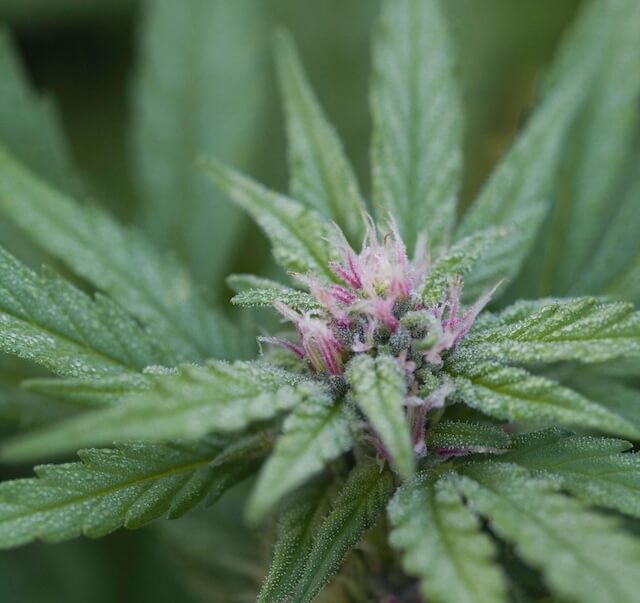
The resin is also rich in terpenes responsible for the plant’s beloved aroma.
We must heat them, mix them with oil or fat like milk or butter, or create a tincture to get the desired effect. This is because the phytocannabinoids do not dissolve in water. They are insoluble. They react to alcohol and fat, which makes them soluble. Because of their soluble characteristics, brews like tea will have a negligible effect on you. Essentially, you’ll be drinking muddied water.
Synthetic cannabinoids
Synthetic cannabinoids are made in a laboratory. They are functionally similar to THC; like THC, they bind to the same cannabinoid receptors. They were initially developed as an alternative to marijuana, but things quickly got out of hand.
Synthetic cannabinoids are potentially dangerous with many undesired effects, often outweighing the fun effects of the high. Synthetic cannabinoids are usually sprayed on dried flower, making it difficult to determine how they are made or what is in them. This also makes it harder for you to know whether you are smoking regular flower or something that has been ‘laced.’
As the legalisation of medical cannabis gained speed, companies began creating synthetic cannabinoids so they could include them in therapeutic drugs.
Medical cannabinoids
Medical cannabinoids are a broad term for any cannabinoid-based medicine approved by the government and used to relieve symptoms.
These medical-grade products are produced according to state regulations and require a license. They are prescribed by a physician or medical body and sold at designated, licensed locations. They are used to treat specific conditions and ailments, and their effects can be monitored, controlled and studied.
Recreational cannabinoids
This refers to the way you use cannabis and usually relates to flower and edibles you get on the street or from a dispensary. It is up to you to decide whether you are smoking or eating, and it is usually to have a good time or to relax.
The downside is that quality and origin are hard to determine, if not regulated, as well as their effects on you.
Now let’s get deeper and see the different kinds of cannabinoids.
Tetrahydrocannabinol (THC)
Ahh, here we go—my muse, light, passion – T H C, the troublemaker.
THC is by far the most controversial cannabinoid and, according to us, also the most interesting. Tetrahydrocannabinol, or delta-9 tetrahydrocannabinol (Δ9-THC), is the only cannabinoid out of over a hundred with a psychoactive effect. It’s the one that makes you high.
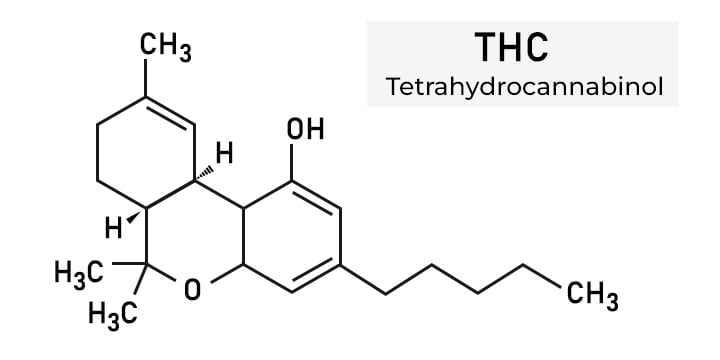
THC was first discovered and isolated in 1964 in Israel by Raphael Mechoulam. He found that, when smoked, THC reaches the brain through the bloodstream, attaching itself to the cannabinoid receptors responsible for thinking, memory, pleasure, coordination and movement. It’s like the independent candidate for office, who suddenly gets elected and gets to run things for a bit.
So why does only THC get you high? It’s because THC and anandamide are best buddies. THC likes playing with the endocannabinoid and can also substitute its responsibilities. The body can recognise and allow it to sneak through the traffic police. From there, it attaches itself to neurons in different brain areas and activates them, bringing the well-known effects.
What is delta-9, you ask?
Good question! Delta-9 is one of several isomers of THC, meaning one of several variations. There are delta-8, delta-10, delta-7, etc. Delta-9 is the most potent isomer and is the one we usually refer to when we talk about Tetrahydrocannabinol.
In ancient times, cannabis strains had lower amounts of THC. Later, when people started venturing higher into the mountains, they discovered more potent strains. We believe that this is because, in higher altitudes, the plant is exposed to a harsher environment, which makes it grow more resistant to stress by producing a higher concentration of THC.
As a phytochemical, THC is assumed to be responsible for the plant’s evolutionary adaptation and is used for protection. More on that later.
Cannabidiol (CBD)
Cannabidiol (CBD) – the nerdy brother – is another active ingredient in cannabis. Although not psychoactive, it produces various therapeutic effects, which makes it an essential part of medicinal marijuana products. It can also be derived from hemp or produced synthetically.
Because CBD is not as active as its counterpart, it is more widely available and easier to use in day-to-day activities. It is also quite versatile: it can be used in tinctures, oils and cosmetics.
CBD was first discovered in 1940.
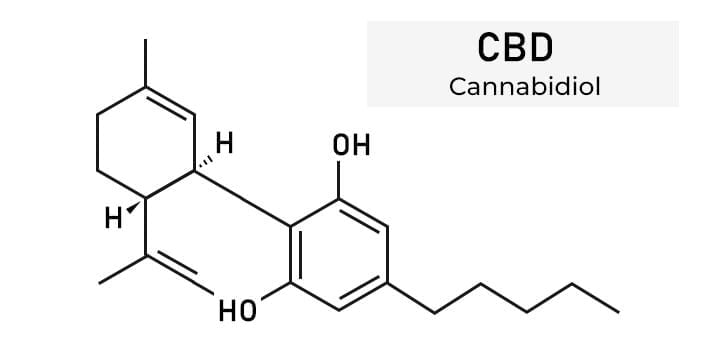
THC and CBD behave like siblings. Often, they fight, but they support each other in most cases.
THC is strong and dominant. It forces you to change your perceptions. It makes you question things. He’s also a bit of a rascal. He’s the reason why cannabis is a schedule 1 drug in the States.
CBD, on the other hand, is very supportive. It’s mellow and chill, and it helps you deal with a situation or when you are feeling down. It relaxes the body and regulates his brother – THC when he gets out of hand. CBD also needs THC to help bind to the CB receptors.
The discovery of tetrahydrocannabinol and cannabidiol led scientists to discover the endocannabinoid system (ECS) in 1988. Four years later, researchers found and synthesised the happy endocannabinoid anandamide.
Cannabigerolic acid (CBGa) / Cannabigerol (CBG)
CBGa or Cannabigerolic Acid is where everything starts.
At the end of cannabis’s growth cycle, the enzymes kick in as the plant absorbs more sunlight. This is when the magic happens. They turn CBGa into either THCa or CBDa, which then produce THC and CBD with the help of light or heat. This is why CBGa is also called the mother molecule. It usually can be found in most strains in tiny amounts, up to 1%. It can be derived from younger plants that are not fully matured.
CBG is mainly associated with anti-inflammatory qualities. It binds to both the CB1 & CB2 receptors, which is thought to strengthen the function of anandamide.
It was first synthesised in 1964 along with THC.
Almost all cannabinoids start in their acidic form, which has different structures and effects than their non-acidic versions.
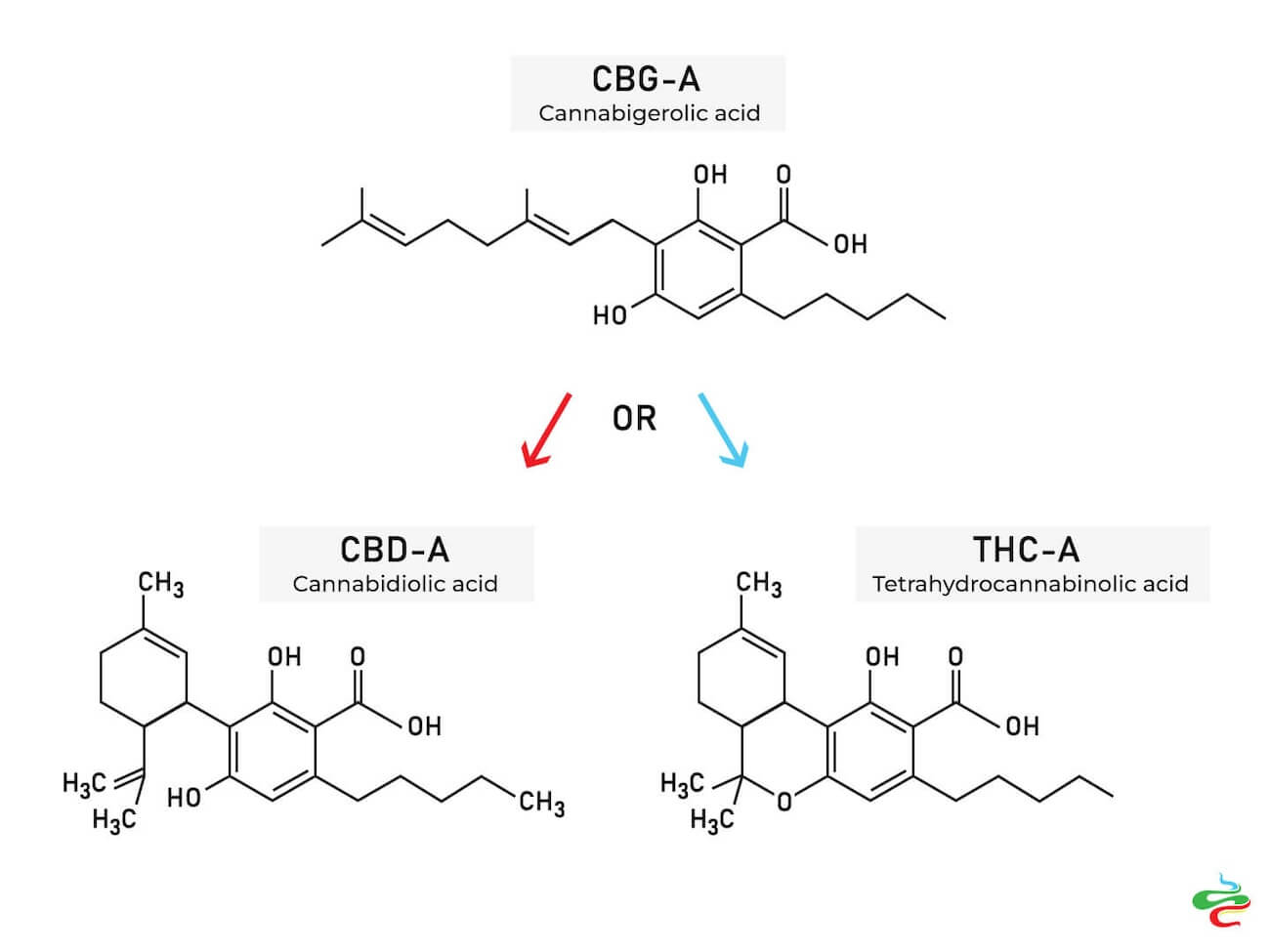
Cannabichromene (CBC)
CBC is one of the most abundant naturally occurring cannabinoids. Like THC and CBD, CBC converts from CBGa. Despite this, we still have much to learn about its properties or effects. Studies show that CBC has strong anti-inflammatory properties and can reduce pain and swelling. This is because cannabinoids interact with receptors that are linked to pain perception.
CBC has also been found in some Rhododendron species.
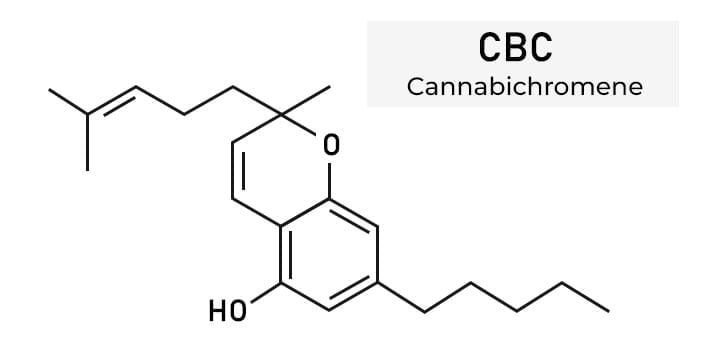
Cannabinol (CBN)
CBN is THC’s dull cousin. It was identified and isolated from cannabis in 1899, making it the first cannabinoid to be discovered.
CBN forms when THC degrades due to prolonged heat, air and light exposure. This is why higher levels of CBN can be found in aged, dry cannabis.
Until recently, we thought the cannabinoid caused drowsiness or a sedative effect. However, this is a bit unclear because researchers now believe that the active effects just evaporate as the plant ages. And since CBN is typically found in old cannabis, it led people to think that it causes sluggishness. In any case, it might not be a good idea to smoke old cannabis, or at least you should conserve your bud in a sealed environment, like a glass jar.
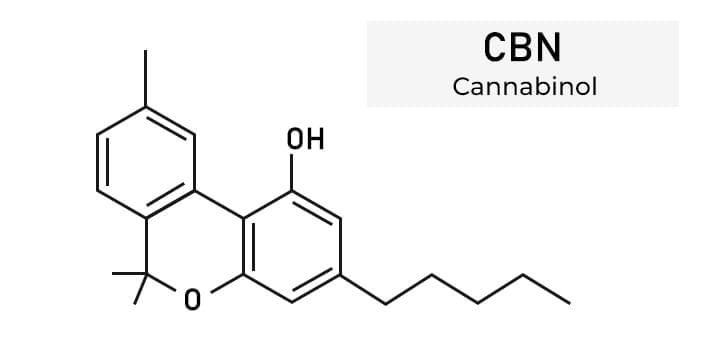
Hexahydrocannabinol (HHC)
HHC is a derivative of THC. It can be found as a phytocannabinoid and can be produced synthetically by adding a hydrogen molecule (hydrogenation). HHC was first synthesised in 1944 by Roger Adams using this method with natural delta9-THC.
The use of hydrogenation is not limited to the production of cannabinoids. For example, a similar process converts vegetable oil into margarine.
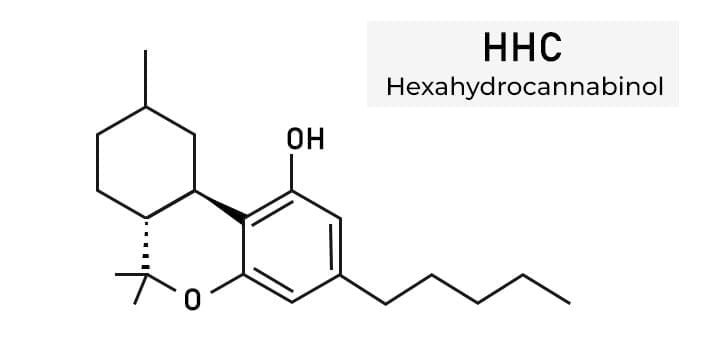
While HHC can bind to the CB1 receptor, its bond is weak, so it is not as intoxicating as typical THC.
Function and effects. What are cannabinoids used for?
Now that we understand the different types of cannabinoids – let’s see how they work, their effects, and why plants need them.
How do they work? Smoking, ingesting, tinctures, cannabis oil and topical treatments
Cannabinoids produce their effects by stimulating the CB1 & CB2 receptors within different parts of the body’s central and peripheral nervous system.
Smoking
Cannabis smoke or vapour delivers the cannabinoids into your lungs. From there, they pass directly into your bloodstream and then your brain. The effects are immediate, from a few seconds to a few minutes of taking a hit. The high reaches a peak within 30 min. The effects last 2-4 hours, depending on THC density.
Edibles
Cannabis edibles travel first to your stomach and liver before passing into your bloodstream and brain. THC and CBD undergo two phases of metabolism in the liver. The first phase converts THC into the much more potent 11-Hydroxy-Δ9-tetrahydrocannabinol or 11-OH-Δ9THC, while the second makes it easier for the kidneys to digest and excrete it.
Some blood analyses indicate that the amount of 11-OH-Δ9THC is higher in the human body after you ingest cannabis than after smoking or inhaling it.
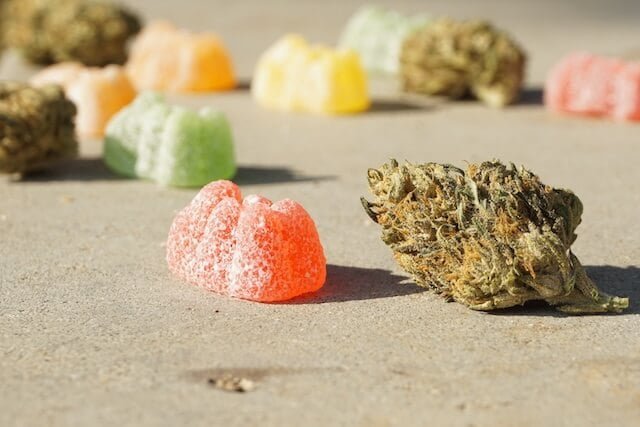
Because of this more potent compound, the effects are more intense and last way longer. They are usually felt within 30 min to 2 hours after ingesting. The peak is within 4-5 hours, and the effects can last up to 14 hours. This is why you should be more careful when trying out new products. Remember to always start with a lower dosage.
Generally speaking, smoking cannabis can be more harmful to your lungs and throat, though edibles are harder to manage and control.
Tinctures
Tinctures are cannabinoid-infused liquids, most often used for their therapeutic effects. The liquid is made by soaking parts of the cannabis plant in solid alcohol for a week or two and then straining it.
The tinctures act as little potions that you can use to conjure up a variety of health benefits. They are convenient because they have a long shelf life and are absorbed quickly due to the alcohol content. Tincture mixes are easy to handle and can be in a dropper bottle. You usually consume them by swallowing or placing a drop under your tongue.
Cannabinoid tinctures can be tailored to your individual needs and preferences. For example, suppose you’re looking for relief from chronic pain. In that case, you might choose a mixture with a higher concentration of CBD, which has been shown to have pain-relieving properties. Alternatively, if you’re looking for a euphoric experience, choose a tincture with a higher concentration of THC, which can produce a high or a feeling of relaxation.
Cannabis oil
Cannabis oil works much in the same way as tinctures. The main difference is the way it’s made. Instead of using alcohol as a base, you create an extract by mixing the flower or the leaves with carrying oil, like coconut oil.
It is easy to use, and you can cook or add it to your meal. You can also add flavour or use it as a topical treatment. Oil products can be used both recreationally and as a therapeutic.
The main form is CBD oil, which reduces inflammation and anxiety and relieves pain.
Topical treatments
These are a type of cannabis product that is applied directly to the skin, usually as a cream, salve, or balm. They are infused with cannabinoids, most often CBD, and you can use them recreationally.
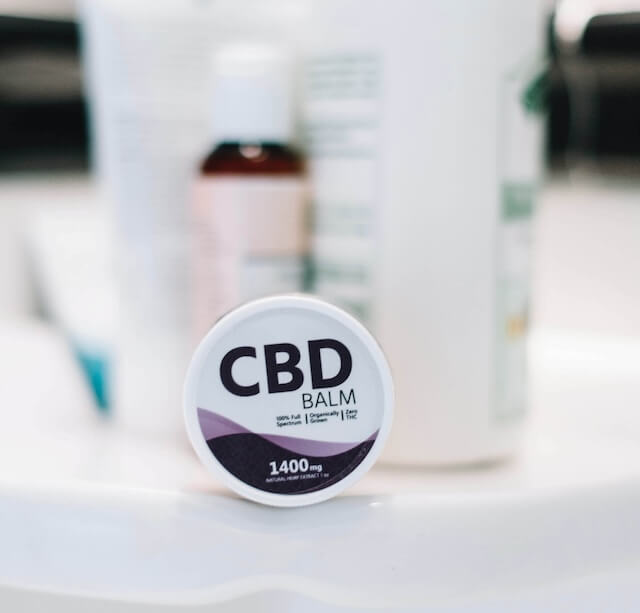
The balm penetrates the outer layer of the skin and then soaks from one layer to another. Then it is transferred through the central barrier into the epidermis.
Cannabinoid topicals have anti-inflammatory and analgesic (pain-relieving) properties, which can be helpful for conditions such as acne, dermatitis, eczema, and psoriasis. They may also reduce redness, itchiness, and other symptoms associated with these conditions. You can use them as part of your daily skincare routine to nourish and protect your skin or as a targeted treatment.
In nature. Why do plants need them?
The simple answer is survival. Cannabis grows worldwide: from tropical, hot equatorial regions to cold, harsh mountains. The plant is a resilient warrior and adapts to various battlegrounds. Its primary weapon is cannabinoids.
Plants can’t move, so it’s exciting how they have evolved an entire biochemical factory for protection against the harsh environment and predators. They are essentially nature’s biochemists.
The ecological functions of cannabinoids include resilience to cold temperatures, protection against excessive light and UV radiation, dehydration, plant defence, and resistance against fungi, bacteria and virus infections. They also protect against certain types of insects.
THC can alter the functioning of the brain areas responsible for new memories and focusing attention. If you are a regular smoker, you might have noticed that when smoking marijuana, your mind gets flooded with different thoughts, and you often get lost in them, forgetting what you were doing then. It also becomes more difficult to perform complicated tasks.
This is why it has been hypothesised that cannabinoids serve as a defence mechanism against herbivores. When eaten, the compounds affect an animal’s short-term memory, and it simply forgets the plant’s location, which, if true, is an ingenious mechanism.
Because of the cannabinoids, cannabis is also a pretty nasty neighbour. As the plant matures, certain chemicals prune the lower leaves. This way, the plant can devote more energy to fertilisation and produce seeds for the next generation. These same chemicals affect the neighbouring plants, slowly killing them so cannabis can dominate an area and not compete for resources. This is why we also call it weed.
In humans. How do they affect us?
The effects that cannabinoids have on us depend on many factors:
- Dosage
- THC: CBD ratio
- Method of ingestion
- Type of strain
- Body and mental state of the person ingesting them
It matters if you are a beginner or a dedicated stoner.
Some common effects can be:
- Euphoria
- Calmness or drowsiness
- Feelings of well-being
- Spontaneous laughter
- Reflectiveness
- Body and muscle relaxation
- Dry mouth and increased appetite, especially for snacks or candy. This is something that we know as the munchies

Our millennial bond with cannabis testifies to something biologists call mutualism – when two organisms from different species work together to achieve mutual benefit.
We cultivate the most valued traits in the plant, thus ensuring cannabis’s evolution. In turn, it contributes to human society through food, clothing, shelter, medicine, manufacturing, and ritualistic and recreational uses. This gives rise to an exciting idea that modern humans coevolved with cannabis, implying that cannabinoids shaped our cultural history and genetic code – the biology of who we are.
Current applications and benefits of cannabinoids
Currently, there is a cannabis re-revolution. What we mean by that is that until the beginning of the prohibition, the benefits and utility of cannabinoids were well-known and highly regarded across the planet.
In the US, hemp was an industrial crop; farmers were legally required to grow it.
After cannabis was outlawed, it entered the black market’s dark ages. Because of the heavy state propaganda against it, cannabinoid benefits were largely forgotten.
Now, as more governments reevaluate their stance, the compounds’ once-forgotten wisdom re-emerges. We see cannabinoids being used as medicine, in food, as a lifestyle, and in cosmetics. There is also a return to the entheogenic roots, where people use the plant in modern rituals and therapies.
Recreational use, foods and cosmetics
The most commonly reported benefits are for relaxation and general well-being. A few things can beat smoking a joint after a long day of productive work, letting your body relax and your mind wander.
In the US, cannabis has inspired the development of an entire edibles niche. It is a common ingredient in infused chocolate, baked goods, beverage mixes, candies, and gummies. Food scientists are currently trying to determine the proper dosage and effects, its impact on the body, and potential allergic reactions.
Because of this, we might witness the birth of a new industry: one that combines cannabis edibles with pharmaceuticals. If this happens, these hybrid products must satisfy requirements from both sides. This is a huge endeavour with massive implications.
Cannabinoids, CBD in particular, are also used in cosmetics. CBD is not psychoactive and can be legally used as an ingredient if not explicitly stated otherwise. Cannabidiol is proven to have antioxidant, hydrating, and anti-ageing properties. It also fights pathogens.
Hemp seed oil is a great skin protector. It hydrates dry skin and slows the natural ageing process due to its high percentage of polyunsaturated fatty acids and significant amounts of vitamins and minerals, such as vitamin E.
Medicinal benefits
THC and CBD can also treat various medical conditions. The scientific community, however, is only just beginning to fully understand how they work and how they can be used for treatment. With the increasing legalisation of cannabis and the growing interest in alternative medicine, cannabinoids are quickly becoming part of mainstream science.
They show great potential as a treatment for chronic pain, anxiety and depression, epilepsy, nausea, vomiting, and insomnia. Cannabinoids effectively reduce symptoms and improve the quality of life for many patients.

An exciting new area is drugs that can help us fight the SARS viruses (which COVID-19 is a part of). With the whole COVID-19 situation, scientists have been exploring whether medicinal marijuana could be used to help fight the virus. The idea is that cannabis has been known to help with conditions like nausea and dementia, which use the same receptors the virus needs to infect our lungs, nose, and gut. If scientists can block the receptor using cannabis extracts, they might succeed in preventing the virus from entering our bodies and reducing our risk of getting sick.
In addition, the terpenes, the molecules responsible for the cannabis aroma, have been shown to fight SARS variations. The terpenes can stop the virus from copying itself and invading our cells.
So, in short, cannabis might be our secret weapon against COVID-19.
Another promising area is the treatment of PTSD in soldiers and veterans. Some clinical studies show that THC can reduce symptoms in people with PTSD by 60%, with many no longer qualifying to be diagnosed with the disorder.
If you’re interested and want to know more about the topic, read our detailed article about medicinal cannabis.
Conclusion
Cannabinoids are a fascinating class of compounds found in the cannabis plant that humanity has used for millennia. They interact with the cannabinoid receptors within our body to produce the therapeutic and recreational benefits we all enjoy. The most well-known compounds are THC, CBD, CBG, CBC, CBN and HHC. THC is the one that gets us high.
These cannabinoids have a variety of applications in the food and cosmetics industry and can be used in different mixtures. They also show great promise as a treatment for chronic pain, anxiety, depression, nausea and vomiting.
Please let us know if you’ve enjoyed this article, have something to share, or are interested in reading other topics.


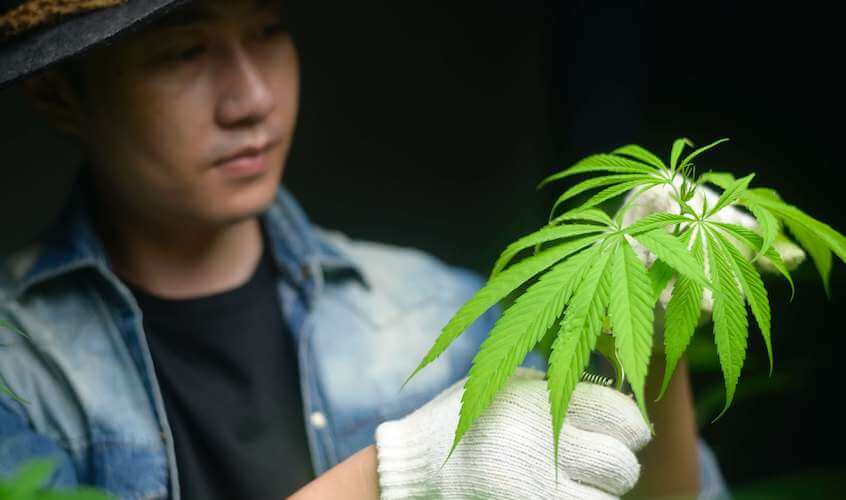





Article Comments